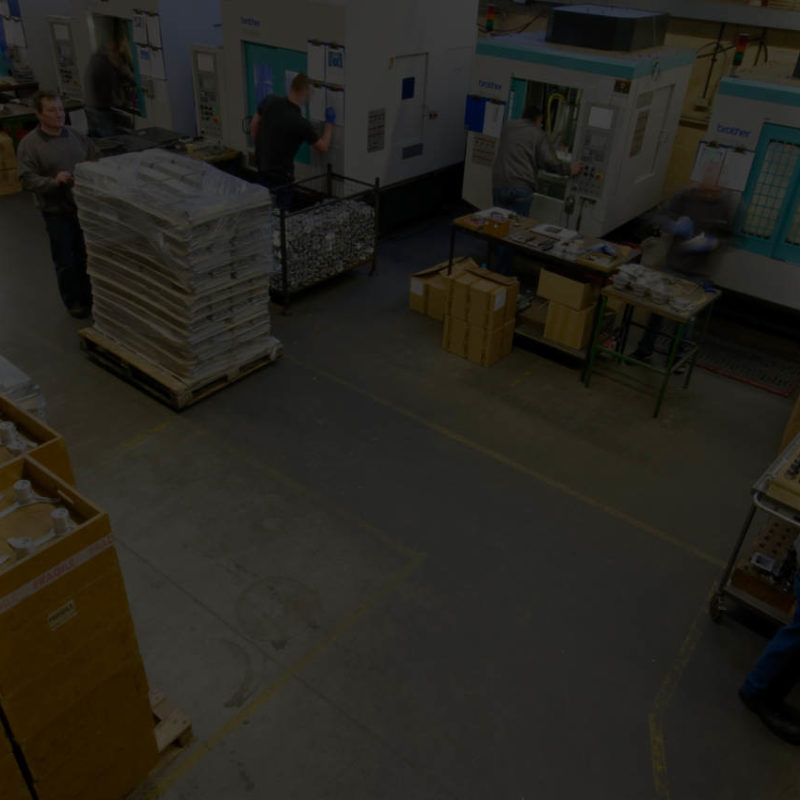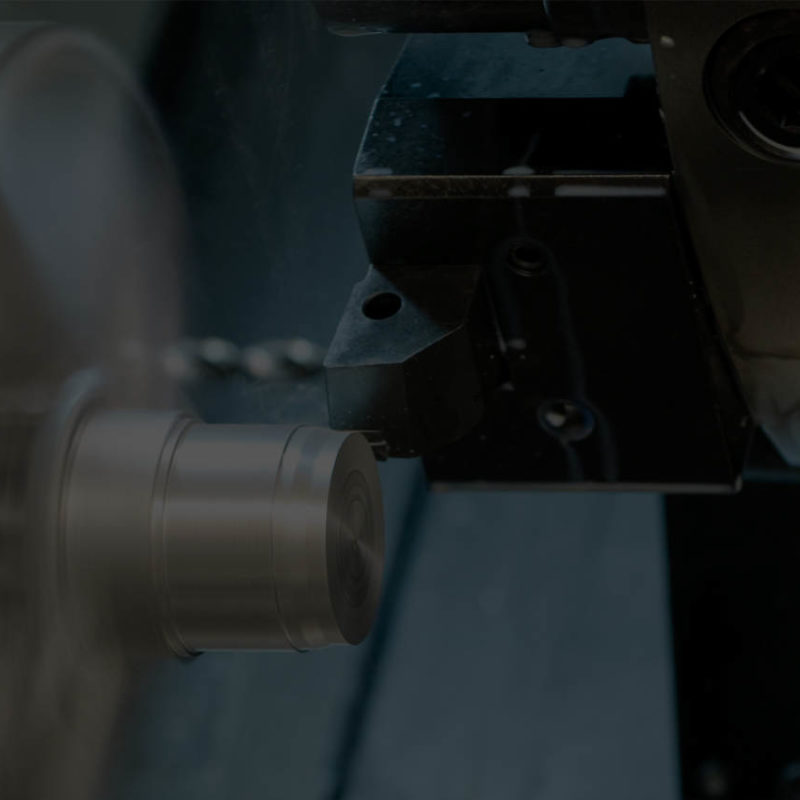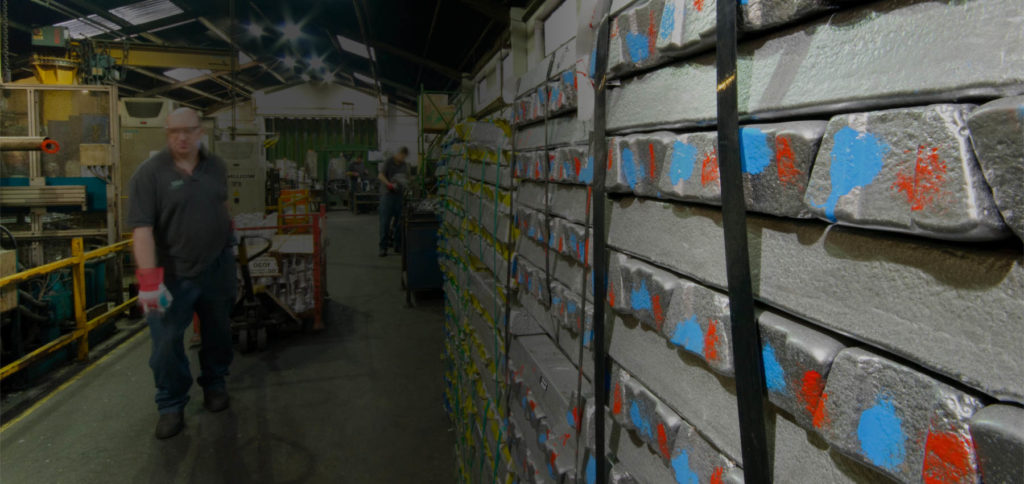MRT Castings
Family owned and run since 1947, and situated on its Andover site since 1965, MRT Castings is a highly successful and rapidly growing foundry business.
Family owned and run since 1947, and situated on its Andover site since 1965, MRT Castings is a highly successful and rapidly growing foundry business.
The company, with its 60 skilled personnel, is on course to double its £4.2m turnover in this current year, largely as a result of diversifying into more value-added products, demonstrating the highest production quality levels, and consistently remaining agile to achieve true competitive advantage. At the heart of its ability to do this is the underlying functionality and flexibility of its Enterprise Resource Planning (ERP) solution – EFACS E/8 from Exel Computer Systems plc.
MRT’s agility and flexibility can be seen from the nature of manufacturing the company is now engaged in. Unlike traditional foundries, MRT offers a variety of casting processes from sand and gravity die castings through to complex high pressure castings for order sizes ranging in batches from between 5 and 50,000. However, the 600+ products demanded from its broad customer base, which range from high tech designer items through to high quality medical and defence items, can also require a range of additional process steps. These include trimming, machining, paint (sub-contracted), secondary finishing, and even final assembly – with or without additional bought-in inventory. Assembly of non-cast products has grown in recent years and now represents 10% of all business.
There are a number of inherent challenges in looking to consistently deliver the levels of flexibility and quality required by MRT’s growing customer base, first and foremost, the nature of the customers themselves. Managing Director Phil Rawnson explains why. “The diversity of our customer base means that not only do our order sizes vary considerably, the way these orders are placed come in many different forms.” He continues, “We get everything from new business, repeat business, and repeat business but with modified designs, some in defined batch sizes with others to be called off over anything up to a year depending on demand. Even allowing for an average of 20% of workload being replaced each year, our orders come in pretty random buying patterns.” Even then there can be further complications with customers wanting to change specifications and/or order sizes just before or even mid-way through a production run.
The variety in order size is compounded by the range of complexity which may be involved. Some orders may be for relatively simple components requiring only 2 or 3 process steps whereas some orders can involve up to 30 steps and have a Bill of Materials comprising 40 individual components. This means a given casting resource may be tied up for anything between 2 hours and 2 weeks. Depending on size, certain orders can only be allocated to specific casting or machining resources which creates scheduling challenges. Different orders and machines also have different setup times which need to be taken into consideration, as does the sequencing of orders depending on the type of raw material used. Phil again, “In many ways there are no such things as standard setup times as this is determined by where the order is coming from and where it is going to.”
Then there are the unknowns which can be introduced by the very nature of casting itself including variability in quality of raw materials and even ambient environmental factors such as temperature and moisture. While the actual machine cycle times are very accurately known, the above can directly impact yield and scrap levels which determines the level of overruns required, which can vary between 5 and 20%. Too few means the order is short, too many creates additional finished stock which takes up physical storage space and may end up redundant. As this is only visible at the quality control stage, it is hard to accurately plan – as is also the time and actions required should any rework be required. Add to this tools which wear at different rates, the need to manage incoming/outgoing subcontracted orders, routine and unpredicted maintenance, and achieving a smooth flow of orders with optimal capacity utilisation, and the task seems almost impossible.
To which Phil adds a further complication, the fact that different process stages may require different Economic Batch Quantities (EBQs). “We might for example ideally need to cast in batches of 1000, or a month’s worth of work, but getting best use of our CNC machines might need smaller batch sizes while our optimum paint run might require a different batch size again.” Not only does this result in different orders being split across different physical locations on the shopfloor, it also means that different orders may be in different stages of production, on or off site, and split across different batches. All of which leads Phil to conclude “Not only do we need to make maximum use of each resource, we need to consistently ensure the smoothest and most efficient route through them. We also ideally need to know what is happening, where, and when for each order and across the business as a whole.”


Prior to investing in EFACS E/8, this task fell to a bespoke, in-house green screen system that had been in place for 20 years. Being bespoke, it fitted the company’s then requirements perfectly but as the company grew in size and in the nature of its business, this began to change and at the most basic levels. Phil again, “The system was based on all our work being in the foundry. There’s no way it could cope with any element of assembly.” Nor could it cope with the growing need to centralise the expert knowledge distributed throughout the company in individual departments. Only Phil could access each of these individually and use this to put together an overview of what was happening. The task of production planning also fell exclusively to Phil who, as he recalls, “had to keep it all together in my own head. As the scale of business increased, so did my blood pressure.”
Consequently MRT was not as agile or responsive as it needed to be. The lack of visibility meant that customers couldn’t be responded to in a timely fashion and establishing the current state of an order resulted in people constantly walking around the shopfloor. “There were lots of whiteboards in use by different people,” reflects Phil, “which often meant different versions of the same data being used by different people.” To counter this there was a tendency to overproduce orders, just in case there was a problem, but this resulted in lots more down time while people waited for the order to reach them. This in turn led to people starting to make whatever order was at hand or what they felt was needed in order to keep busy even though this might create increased downtime by increasing setup times. As internal efficiency rates slipped, so did customer delivery dates.
Addressing the millennium bug began the process of searching for an alternative as the costly rewrite of the existing system highlighted the company’s reliance on one person to keep the system going. This coincided with an increasing move to the use of email as a business tool, something the existing system couldn’t handle. Customers too were demanding greater degrees of traceability, quality control and responsiveness than could be handled and there was a growing expectation that suppliers should be using industry standard systems. This led to a visit to a trade show, a review of several systems and what turned out to be a quick, positive decision for EFACS E/8. “In the end, only EFACS E/8 offered us the flexibility and customisation that we were looking for,” explains Phil. “We were used to a bespoke system that had been designed to work the way we work. Everything else but EFACS E/8 would have required us having to change our processes to fit a prescribed way of working and that simply wasn’t an option for us.”
Phil acknowledges the implementation was quite a challenge as well as a learning curve for all. However, the persistence of MRT’s vision combined with the support of a regular onsite EFACS E/8 consultant slowly but surely began to bring a growing number of benefits which have been foundational to the company’s continued growth and diversification. Central to these are the increased visibility and increased capacity utilisation across the entire business. “Data is now accessible to every team member, wherever they need it and at the level they require,” comments Phil. “this includes what is happening and where at each individual resource, the status of every live works order, forward visibility of what is coming down the pipeline as well as realistic costing data.” He continues, “Because the data is in real-time for us, we can use this to examine different ‘What-if?’ scenarios when we have a need to react to something, be that a last minute change by the customer or a problem with an asset or supplier.”
It’s one thing having reliable, up-to-date data, it’s another being able to access that quickly and in the exact format required. Here again the ability to easily customise reports helps generate meaningful Business Intelligence (BI) which can be used at a strategic level. Not only can the impact of taking on a new order be seen at a production planning and scheduling level, EFACS E/8 can help determine the competitive advantage by potentially investing in a new plant asset and/or taking on additional staff. Phil describes other ways the visibility from EFACS E/8 directly benefits customers. “Because we can see in real-time whether we are ahead or behind the planned schedule, we can proactively discuss options with customers about what works best for them. This means we can keep more of them receiving more of their orders more of the time.” He notes that they have observed an increasing number of customers now actively expecting visibility of available capacity.
At the heart of delivering this visibility is the implementation of touchscreen/barcoding hardware throughout the shopfloor. Job start/stop, and shift start/stop times are now all recorded directly into EFACS E/8 which removed a huge paper trail from the shopfloor as well as the potential data duplication/variation issues inherent in previous manual paper systems. As this also relied on all the paper information being manually entered into a system at the end of the week, EFACS E/8 has also brought the visibility window down from a week to a single shift. Quality control is further enhanced by the EFACS E/8 Document Management module. Previously any relevant design drawings and documents were stored manually and in a number of different locations which meant it was possible for operators to end up using out of date or even the wrong specifications for an order. Now all this is handled centrally by EFACS E/8 with only the latest information, diagrams and images linked to each order being displayed to the relevant operator.
EFACS E/8 also makes it possible to physically track and know the location of every order, even when this is physically split at different locations across the business. This is especially important for more complex orders requiring final assembly as different sub-assemblies including bought-in components all need to be available at the right place and time for their allocated assembly slot. Previously this would have involved physically walking around the shopfloor and checking the status of every resource and estimating completion times. MRT also uses EFACS E/8 to track the flow of orders to and from subcontractors, all of which makes the daily production planning meeting much shorter and more efficient. “Now at our production meeting,” explains Phil, “we can accurately see what has happened across each resource, department and the business as a whole. This helps us respond in the most intelligent way making it easy to identify trends at production as well as at a sales level.”
Tool lifecycle management is another area which has been improved thanks to EFACS E/8. Each product involving casting requires a dedicated and often very sizeable tool. While this is owned by the customer, there is a need to accurately maintain details of the value, condition and history of each tool. Given their physical size and the fact that only certain resources can work with certain tools, knowing the exact location and availability of each tool, which EFACS E/8 provides, saves considerable time and costs.

When asked how any of these benefits can be quantified, Phil simply points out that in the last year alone they have doubled output with a much smaller increase in resources. They have done this while reducing lead times by 30% and achieving an overall reduction in its time to market for new products. Speaking of new products, Phil describes how EFACS E/8 has also been of assistance here. “For demanding customers, particularly in the medical and defence sectors, we are required to prove and document production process control and traceability. Because we can now demonstrate this consistently with data from EFACS E/8, this has led to our ability to break into new markets which would have been simply impossible beforehand.” He cites a further example of how EFACS E/8 has led to new business opportunities. The visibility and accuracy of data within EFACS E/8 allows MRT to look at customer buying trends and see where cost savings can be gained. For example, MRT could see that a particular customer had many products which used a lot of common parts. Again, using EFACS E/8, MRT can now work out the annual requirements for the customer which they can then call off in smaller batches and smaller time scales as MRT would technically be holding on to part finished inventory for the customer. Not only does this represent a cost saving compared to the customer holding full inventory, it allows them further potential cost savings should they change design specifications mid-year and not be left with redundant stock.
MRT is keen to keep developing its use of EFACS E/8, rightly recognising its role in providing the company with a competitive edge. Phil therefore concludes, “Over the last 10 years, MRT has grown, diversified and become more adaptable to its market. Exel and EFACS E/8 have supported us by providing the data and systems required to achieve this. Looking forward we expect to see even faster change and greater pressures and we have every confidence that the scalability and flexibility of EFACS E/8 will help us meet and overcome these challenges.”
Contact our team of experts to discuss your business requirements. Our team will discuss how Exel’s ERP & Field Service Management software can benefit your business processes and arrange a product demonstration.
Contact Us